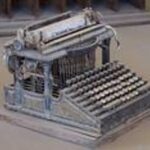After your initial contact with your client or potential customer, a well-written follow-up letter will solidify your reputation to your target audience. Sometimes it can even change the mind of a customer who originally decided not to do business with you. Many businesses use a follow-up letter with their sales campaign, which is something you may want to consider as part of a long-term marketing plan.
Continue the message from your original sales letter using some of the same language and information in your follow-up. You don’t have to copy entire paragraphs or blocks of words, just keep enough of the flavor to remind your reader of the original correspondence. This also helps tie all your materials together, keeping you focused on the intent of your campaign.
If you’re selling something your target audience may see as “speculative”, such as a product that utilizes methods or technology that hasn’t been proven yet, try a multiple follow-up approach: a series of letters showcasing the benefits of the product and how purchasing it would be a positive and intelligent decision. Don’t be afraid to market creatively; these follow-ups can take the form of announcements, invitations, and so forth.
When possible, add some additional information about the product, service or event in the follow-up. This too will speak to the customer’s needs or wants, reminding them again of the benefits they would enjoy in doing business with you.
Mentioning how you came across your target’s name will create a bond and feeling of familiarity, since the reader knows you didn’t just pull their name out of a hat. Tell them who referred their name to you; if you’ve met them before, remind them where and when. If no contact has been made previously with them, don’t pretend you have, but thank them for taking the time to read your letter.
As mentioned earlier, avoid using the exact same letter you used in your original contact with the reader, especially if that letter didn’t generate any positive leads. Extract the information you think is important and use that in your follow-up, but try to figure out why the first letter didn’t work and adjust accordingly.
When closing the letter, leave it open for future contact. Remember, the goal of a follow-up letter is usually to keep the lines of communication open with your reader so they will be more likely to do business with you in the future. Adding an incentive at the end of your letter, like a new special discount or offer, will make them eager to read your correspondence next time.
A uniform look to all your marketing materials will help ensure that your audience will recognize your business or its products immediately upon viewing those materials. The same letterhead, logo and signature on all your letters will quickly establish a presence for yourself with your readers.
In the case you were given a referral or lead, don’t forget to thank the person who gave it to you. In some cases you may want to let them know how everything goes; it’s always a good idea to tell the referrer if you’ve been successful with the sale.
When you’ve finished writing your follow-up letter, re-read it to make sure it conveys all pertinent information while remaining friendly. As always, look for typos and grammar mistakes while you’re at it. Even the best follow-up can crash and burn with missing commas or oddly-placed apostrophes. By the time you’re done, you should have a follow-up letter that will make the reader sit up and take notice – and maybe earn you that extra sale in the process.



